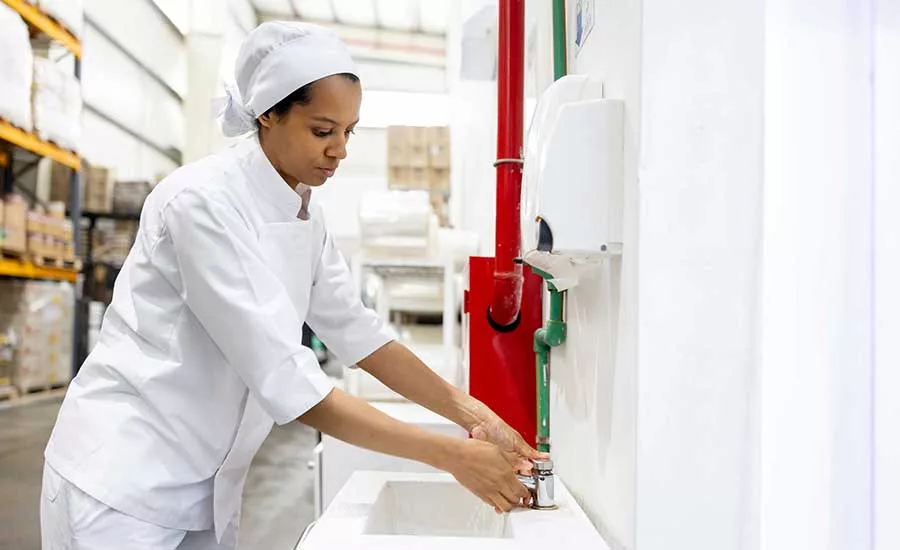Rumored FDA Budget Proposal Would Cut Funding, Move Routine Food Inspections to States

Image credit: 8photo via Freepik
The U.S. Food and Drug Administration (FDA) is rumored to face significant budget cuts that would shift the responsibility for 100 percent of routine food facility inspections to states. The agency is also said to be suspending its quality control program for its food testing laboratories, as well as efforts to bolster the agency’s testing for highly pathogenic avian influenza H5N1 (HPAI H5N1) in dairy and pet foods.
According to draft White House budget documents seen by Inside Health Policy, the Trump Administration may propose $6.5 billion in funding for FDA in Fiscal Year (FY) 2026, a 17 percent budget cut compared to FY 2023. Former President Biden’s budget request for FDA in FY 2025 was $7.2 billion, an increase of 7.4 percent or $495 million over FY 2023, and $153 million over FY 2024. Former FDA Deputy Commissioner for Human Foods Jim Jones also requested $15 million in additional funding specifically to support the agency’s Human Foods Program priorities for FY 2025—but these funds were not granted.
Moving Food Facilities Inspections to States—is it Feasible With Reduced Funding?
Per Inside Health Policy, the draft budget documents propose to make the reduced $6.5 billion possible, in part, by “expand[ing] the current state contracts for routine food facility inspections program to cover 100 percent of all routine foods.” The document says that the U.S. Department of Health and Human Services (HHS) will submit an implementation plan that includes state-by-state timeframes no later than May 1, 2025.
About the rumored proposal, FDA officials told CBS News that some higher-risk routine food inspections would likely remain at FDA under the plans, such as annual visits to infant formula manufacturers and routine inspections in foreign food facilities, and that the plans may need congressional action to fully fund. However, also in a statement to CBS News, an HHS spokesperson denied that FDA is planning to shift routine inspections to states at all. At present, FDA already contracts 43 states and Puerto Rico to conduct some routine food inspections, and for produce farms specifically, the agency has agreements with most states to fund routine inspections that are carried out by local agricultural departments.
Co-founder and former Executive Director of the Alliance for a Stronger FDA, Steven Grossman, J.D., said in an FDA Matters blog post that the success of the Trump Administration’s supposed plan to move all routine food facilities inspections to states would depend on: “1) whether the state contracts would include enough additional dollars to offset increased state costs, 2) which states have the infrastructure to [do inspections] alone, and 3) how much money [would] be left in FDA for national coordination and enforcement, plus re-inspections.”
However, even at FY 2024 and FY 2025 funding levels, FDA officials, senators, and food industry stakeholders alike have previously expressed concerns about insufficient financial resources to support state-federal collaboration on frontline food safety inspections—a collaboration that the White House’s reduced FY 2026 budget draft proposes to expand.
Specifically, when he asked for $15 million in additional funds for FDA’s Human Foods Program in FY 2025, former Deputy Commissioner Jones also underlined a significant budgetary challenge that would not be assuaged even if the extra $15 million were granted to FDA—the shrinking federal funds the agency has available to give to state public health agencies for food safety activities. He explained that, over the previous five years, FDA gave states approximately $119 million annually for their food safety initiatives—$36 million more than the agency actually accounted for in its yearly budgets ($83 million), because FDA was pulling from “extra money” in the budget that was otherwise going unused. FY 2025 was the first year in five years that the states did not receive this $36 million in extra funding.
Looking for quick answers on food safety topics?
Try Ask FSM, our new smart AI search tool.
Ask FSM →
Prior to his resignation, Mr. Jones shared in a webinar hosted by the Alliance for a Stronger FDA that, although FDA and state public health agencies were in discussions about how their limited funds could best be spent to ensure priority work is carried out, he was “not optimistic” about any potential strategies to come up with sufficient financial resources.
FDA Suspends Quality Control Program for Food Testing Laboratories, Product Testing for Avian Flu Due to Staff Cuts
Moreover, in an internal email seen by Reuters, FDA said that it will suspend its quality control program for food testing laboratories as a result of the recent, significant reduction in force across HHS. The Proficiency Testing (PT) Program, part of the work of FDA’s Food Emergency Response Network (FERN), provides oversight of the approximately 170 laboratories in the agency’s network that test food for pathogens and contaminants.
"Unfortunately, significant reductions in force, including a key quality assurance officer, an analytical chemist, and two microbiologists at FDA's Human Food Program Moffett Center have an immediate and significant impact on the FERN PT Program," says the email, per Reuters. It continues, “These PTs are critical to demonstrating the competency and readiness of our laboratory network to detect and respond to food safety and food defense events.” The email also explains that suspension of the PT Program means that the agency will not be able to carry out planned quality control work regarding Cyclospora in spinach or the glyphosate in barley, among other tests.
FERN’s PT Program is suspended until September 30, 2025, at the earliest.
Also according to Reuters, FDA has already suspended its work to improve testing for avian influenza in dairy and pet foods, despite the ongoing outbreak affecting North American dairy herds and causing deaths in house pets that ate contaminated foods.
Per an internal email, the Interlaboratory Comparison Exercise for Detecting Highly Pathogenic Avian Influenza, set to launch in April, has been put on hold due to FDA Human Foods Program staff cuts that would have supported the scientific and testing needs of the program. The Interlaboratory Comparison Exercise would have comprised more than 40 laboratories from FDA, the U.S. Department of Agriculture (USDA), and the private sector. The collaboration “would have been critical to ensure confidence in the laboratory methods for food safety and animal health,” said the email.
A source told Reuters that the effort would have served as a quality assurance program to ensure reliable results in FDA's avian flu testing of dairy products and pet food. Similar exercises exist at FDA for Salmonella testing and testing for other foodborne pathogens.








